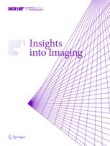Insights into Imaging is the official journal of the European Society of Radiology (ESR)
Imaging of thoracic hernias: types and complications
Thoracic hernias are characterised by either protrusion of the thoracic contents outside their normal anatomical confines or extension of the abdominal contents within the thorax. Thoracic hernias can be eithe...
